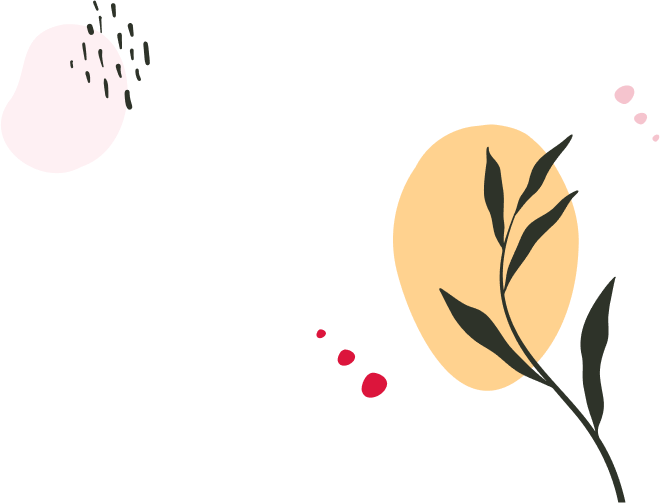Introduction to Mindfulness Meditation Workshop Recording

Welcome to a cozy introduction to mindfulness meditation!
This recording is a chat where we untangle some common myths about mindfulness and share a couple of ways to bring more presence into your everyday moments.
In this 15-minute recording, you’ll learn:
- What mindfulness is not
- What mindfulness is
- How can we practice it: formally and uninformally
Session Transcript:
I’ll start with a short story, a metaphor, to share with you. Once, there was a village on the bank of a large, strong river. One day, a villager saw someone being swept downstream. Naturally, the villager was concerned and, being a strong swimmer, jumped in and pulled the person ashore.
But then, another person was carried downstream, facing the same predicament. And then another, and another. The villager called their friends for help, and they all came to assist. They became increasingly busy and exhausted as more and more people in distress floated down the river, and they brought them ashore one by one.
This continued day after day, and everyone became exhausted and confused, struggling to understand the situation. So, the villagers created a net and cast it across the river to catch the people. It went on and on. I know that’s a bit dramatic, but I’d like to ask you all:
What were the villagers missing?
Why were people ending up in the river? They were focusing on the symptom without addressing the root cause, without looking at why this was happening in the first place. And my second question for you is, how does this relate to our work today?
Yes, I think it’s about increasing awareness of why people end up in such a predicament, to help them avoid it in the future. Many people embrace mindfulness when they are already facing problems and are trapped in stress, like the people in the net. Perhaps by introducing it as a habit, we can prevent those symptoms, avoid getting trapped and needing to build a net or anything similar. Beautiful, beautifully said, all of you.
What strikes me is that we’ve tried to fix things downstream for long enough.
Today, in this room, we are willing to embark on the journey to discover what’s happening upstream in our own lives and minds. And that’s what I’d love for us to explore today. For those who don’t know me, I’m Maria. My pronouns are she/her. I’m from London, and my motivation is to inspire you to navigate life’s challenges with a bit more compassion.
That’s my deepest desire for today. We’ll discuss mindfulness, meditation, and have an overall introduction to what they are. Another point I’d like to make is that I’ll try my best to make this practice accessible to everyone. But sometimes, I’ll make mistakes because I’m human, and I bring my biases and experiences to this conversation.
So, this is an invitation for you to make this practice your own. It’s more about what feels right for you and less about what I say mindfulness is supposed to be. Let’s get started. I’m curious, since we’re all here, you might not yet fully grasp what mindfulness is about, but perhaps you have a sense of what it isn’t.
Chances are, you’ve encountered some misconceptions, some myths about mindfulness, and intuitively thought, ‘No, that’s not it.’ I’m curious to hear from you:
What do you think mindfulness is not?
Wrong answers only.
It’s not therapy. Beautiful. Anu says it’s not meditation. Beautiful. Any other ideas? What mindfulness is not?
Maybe self-optimization? Hmm. Self-optimization? I’d say mindfulness is not easy. Some might think it is, but it’s not. Great point, it’s really not. It can be quite tricky. I think it’s not a motivational program or something like that.
All right, beautiful. Yes, these are all misconceptions, things that, in some senses, might be part of the lens through which we view mindfulness, but they’re not the whole story. Here are some other misconceptions I’ve heard over time.
It’s not a relaxation exercise. It’s not about becoming ‘Zen,’ whatever that means. We don’t necessarily want to calm down for stress management, even though that’s part of it. That’s not the end goal. It’s not a quick fix, and it won’t happen overnight, or be fixed by tomorrow.
Sorry if you were expecting that. It takes time, just like going to the gym. We don’t expect to be fit the next day. It’s similar; it takes time. It’s not just a technique; we’ll see later that it’s more of a lifestyle, a quality, a philosophy we adopt. And it’s not a religion.
Even though its roots come from Buddhism and Vipassana Buddhism, mindfulness and meditation are religion-agnostic. They don’t necessarily belong to a religious context. We can see mindfulness in many different scenarios and contexts. This is just an idea of what mindfulness is not.
So, by elimination, we can now explore what mindfulness is. I’d like to hear from you first:
Do you have any ideas about what mindfulness is?
I connect it with the ‘here and now.’ It’s in the source of Buddhism, the ‘here and now.’ Beautiful. Thank you. I see in the chat, ‘awareness,’ ‘being present.’
In my view, mindfulness is a very abstract concept. It’s like love. We can spend hours discussing what it is. One of my favorite definitions comes from Jon Kabat-Zinn, a doctor, professor, and mindfulness teacher who did much to popularize mindfulness in the West.
He defines mindfulness this way:
Mindfulness is the awareness that arises from paying attention in a particular way. Paying attention in three ways: on purpose, moment by moment, and non-judgmentally.
‘On purpose’ means I willingly bring my attention to something, in this case, the present moment. If a book falls off my shelf right now and suddenly catches my attention, that’s not mindfulness because I didn’t intentionally bring my attention there.
Then there’s the non-judgmental piece, with kindness, if possible. We know life can be hard at times, but it can also be wonderful and miraculous. The key element of our practice is to cultivate a curious, kind attention to all experiences. This feels relatively simple, I imagine, but how many of us spend too much time worrying about the future or ruminating about the past?
Can I see some hands? I see some. Yeah, okay. There are a few hands.
The truth is, the mind is rarely in the present moment.
Instead, it rehearses the past and the future. It’s how our brains are. This isn’t our fault; it’s brain conditioning.
Neuroscientists call it the default mode network. It’s the mind anticipating needs, scanning for dangers, and maximizing the probability of survival, from tigers back then to mortgages and lawyers today, I imagine. Of course, there’s value in that. But we miss the present moment.
Which is the only moment we have to be alive, to make decisions, to grow, to heal, to be there for the people we love. The truth is, many of us live most of our lives on autopilot, lost in thought. And we realize we haven’t really been present for the important times, and we might feel the pain of that.
So, mindfulness is a quality of life we aim to obtain, paying attention in these particular ways.
It trains us to rewire this conditioning of being lost in thought and bring our attention back to what matters, on demand, whenever we want and need. I’d like to give you a small exercise to feel it in practice, because I know this can be a bit vague.
I invite you to take one hand, your preferred hand, and then take a finger of the other hand and start tapping it against the palm of your hand. Press as much as you want, whatever feels comfortable. If it feels good, you can close your eyes for a moment and feel the hand you’re tapping, paying attention to the sensation on your palm.
Keep your eyes closed for a couple more moments, then stop tapping. You can probably feel some tingling or something happening in your palm. What you’re doing right now is paying attention to your hand, just the present experience of your palm right now.
In mindfulness practice, we choose an anchor, which in this case is the hand, but it can be the breath or any other area of the body. We can do this even if we don’t feel any sensation in that area. Numbness counts as a sensation.
Nobody can feel every part of their body all the time, and it gets easier over time. If, as we perceive the sensation, we suspend judgment and welcome curiosity, we have a moment of mindfulness. ‘Interesting, how does it feel when I tap my hand? What is this tingling?’
This is curiosity, this is compassion in the present moment, willingly bringing attention to the hand on demand. What we just did was mindfulness. Mindfulness is the quality we aim to cultivate. The idea is to live our lives in this way, at least a significant portion of the time, because living it fully mindfully is not realistic, as we’ll see.
How do we cultivate it?
There are two categories of practice: formal and informal.
Formal practice is traditionally called meditation. It involves setting aside time to do nothing but meditate. A formal meditation can last from one minute to many hours, and traditionally, it can be done in four body positions:
Sitting, standing, walking, and lying down.
This is according to the Vipassana tradition. There’s no better or worse; it’s about experimenting and finding what feels good, what allows you to be consistent and have a practice that nourishes you. Experiment and find what resonates most. Then, there’s the other category: informal practices.
We practice informally when we apply mindfulness or compassion fully to something we’re already doing in our everyday lives. For example, we focus intensely on the sensations that arise while eating, focusing on sight, smell, taste, and touch, or even sound, to anchor us in the present moment. I know there are many coaches and leaders in the room.
When we focus 100% on a conversation and practice active listening, that’s a mindful practice. I am, on demand, fully present in the conversation. The basic instructions are the same for both formal and informal practices. We become aware of the present moment experience.
Once we notice our attention has wandered off, we gently redirect it to the present moment. Just these two instructions: realize where our attention is, and if it’s not where we want it to be in the present moment, gently bring it back. That’s it.
I’d love us to commit to some practice.
Mindfulness only works if you work it.
To use the fitness metaphor, if you want to be fit and healthy, you need to dedicate time to exercise regularly. You can’t just listen to lectures and read books on the topic.
That won’t make us fit, unfortunately. The same is true for meditation. We want to practice this, and let’s try to make it daily. Ideally, five minutes, but it can be even less.

